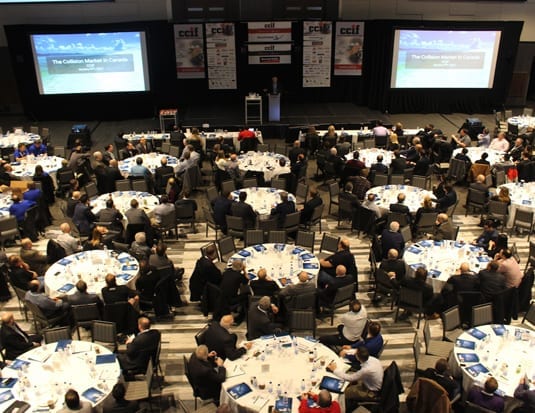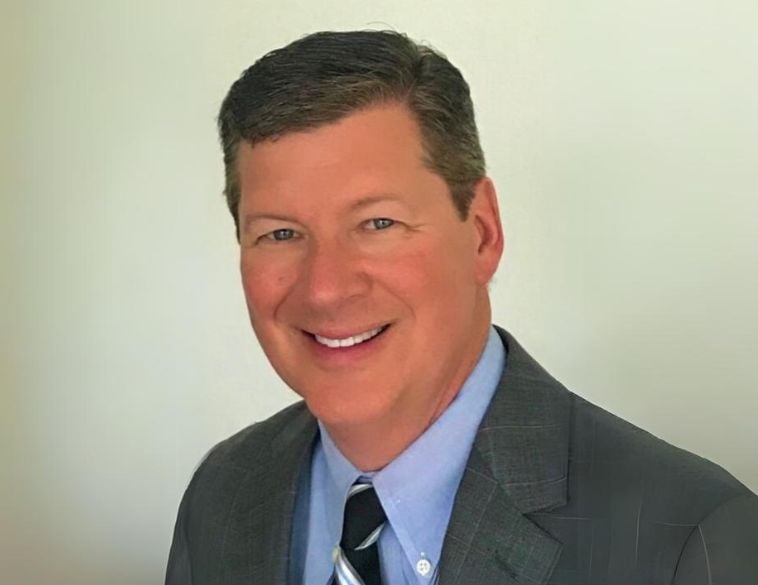For information, networking and opportunities, this was the place to be for collision industry professionals.
With over 700 attendees registered, attendance at CCIF Toronto 2017 was up over the previous year. In fact, during his initial address of gathered contingent, CCIF Chairman Joe Carvalho noted that approximately 32 percent were first time visitors to CCIF—an encouraging number by any yardstick.
Content at the Toronto event this year ran the gamut from recruitment to education; training and collision repair procedures (including the much-emphasized need for pre and post-repair scanning). Kicking things off was Annabelle Cormack of Cormack Recruitment Ltd.
Cormack noted that the challenges and issues facing recruiting the right people are by no means limited to a specific industry. She said that in many cases, managers and owners tend to have a “deer in the headlights,” view of finding new people. “It’s a panic mode we get into,” she said. “There’s no recruitment strategy or process in place and we haven’t done a great job of developing candidates internally.”
Cormack said that recruiting should be the responsibility of everybody within the organization and done effectively, it requires a perpetual process of multiple stages. Multiple interviews, background checks; getting new employees to learn and understand the organizational culture as well as regular touch bases are key to ensure not only do shops and business attract the right people, but keep them, she said.
Andrew King from DesRosiers Automotive Consultants discussed the state of the automotive industry in Canada related to sales volumes of new vehicles as well as analysis from the CCIF Business Conditions Survey and AIA Labour Market Initiative. In reference to the auto industry as a whole, King talked about “hard” and “soft” disruptors. Soft disruptors, he said, concerned millennials and their buying habits related to cars. He noted that while they are billed “as the sharing generation,” many will end up buying cars like their parents, simply because they will need them, but he stressed that in some cases, they may look at vehicles more as a grudge purchase than something they truly desire.
Huge implications
Related to hard disruptors, King talked about Corporate Average Fuel Economy standards which currently, require automakers to achieve a fleet wide average of 4.3L/100 km (54.5 mpg U.S.) by 2025. “If current CAFE regulations remain in force, this will have huge implications for the industry,” he said. Perhaps an even bigger one is autonomous vehicle technology. “If it does happen there will be fewer accidents,” he said. Pointing to the fact that tech companies such as Google are recruiting hordes of automotive engineers, it looks like things could get very interesting in the coming years.
Related to statistics, specifically the CCIF Business Conditions Survey, King said that based on data gleaned fro 750 repairers that took part, it showed that on average, collision facilities across Canada are growing on average by 13.8 percent per year, though in some areas, such as South Central Ontario, growth is as high as 17 percent. He also said that the growth in small SUV and luxury vehicle sales means that shops need to be prepared to be fixing more of these types of vehicles.
Patrice Marcil, North American Learning and Development Director, Axalta Coating Systems, talked about the connection between the collision industry and educational institutions and how we, as an industry can help to train the next generation of professionals.
“Millennials will represent 50 percent of workforce within the next five years,” said Marcil “and we need to know what they are expecting from employers.”
Marcil brought together a panel discussion that comprised of Mark Deroche, Chief Instructor, British Columbia Institute of Technology; Scott Kucharyshen, Program Head, Saskatchewan Polytechnic; Paul Santos, Autobody Professor and Program Coordinator at Centennial College in Toronto; Claude Viau, Autobody Instructor, Centre of Professional Studies, St-Jerome, Que., and Don MacKay, Autobody Instructor at New Brunswick Community College.
Funding challenges
The panelists concurred that one of the biggest issues facing Autobody programs concerns funding, or rather the lack of it. With budgets that in many cases have not increased for decades, the limited resources available means that these programs require outside support—including partnerships from collision industry vendors—to help them not only provide the equipment, but also the level of structured training necessary to ensure their students make the transition from the classroom to the shop floor on a professional basis. And it also requires promoting programs to ensure sufficient students enroll in them.
Kucharyshen perhaps summed it up best. “The way we make our money is by tuition—the more students we get the more money we get and the more we can do.”
The other big panel discussion of the day, hosted by Mike Anderson from Collision Advice, brought together representatives from OEMs, insurance carriers, vendors and a single collision repairer. The subject concerned repair procedures, specifically the issue of pre and post-repair scanning. It proved to be a very hard-hitting and in-depth discussion, talking about OEM versus aftermarket scan tools, a look at the Position Statements of various OEMs regarding pre and post repair scanning and how, exactly the procedure for performing the repair needs to be done.
One of the key issues that emerged, was the fact that in many cases, that the files on pre and post-repair scanning are not well documented, meaning that often, repair shops get caught in the middle, between an OEM that requires them to scan the vehicle, but an insurer that does not understand the process required and is therefore wary of being billed for it. “We need the explanation as well as the price,” said one insurance representative. “If we have all the proper documentation I don’t see any reason why we shouldn’t pay for the scan.”
Better communication
Another issue concerns the lack of communication between OEMs and the franchise retailers that represent them. Anderson said that the issue comes down to retailer service departments not often being aware of procedures required and thus don’t pass on the knowledge to collision shops that work with them for body repairs. “There needs to be a better job at educating service departments,” he said.
Ensuring shops are able to properly research OEM repair information is also critical, said Anderson, since OEMs often make running changes to models within the same year and if you don’t have the right data, you won’t be able to perform the repair properly. “You might need to remove the roof and rear glass to replace a quarter panel,” he said. “If you don’t have access to the specific model information then you don’t know this,” he said.
Zack Spencer, founder of Motor Mouth, one of the largest automotive related YouTube channels in Canada and a seasoned automotive journalist and TV presenter, talked about the new safety features proliferating in the automotive marketplace and also changing forms of ownership including monthly subscription fees that give people access to an entire model range of vehicles—something that will no doubt impact the claims and collision repair process.
Other highlights from CCIF Toronto 2017 included an update on I-CAR Canada’s training programs from Andrew Shepherd, Senior Director, AIA Canada & Executive Director, I-CAR Canada, as well as an evening cocktail reception of January 26 and the impressive Cars and Technology Showcase that highlighted the latest in vendor services, tools, equipment and OEM repair procedures. [wds id=”515″]



